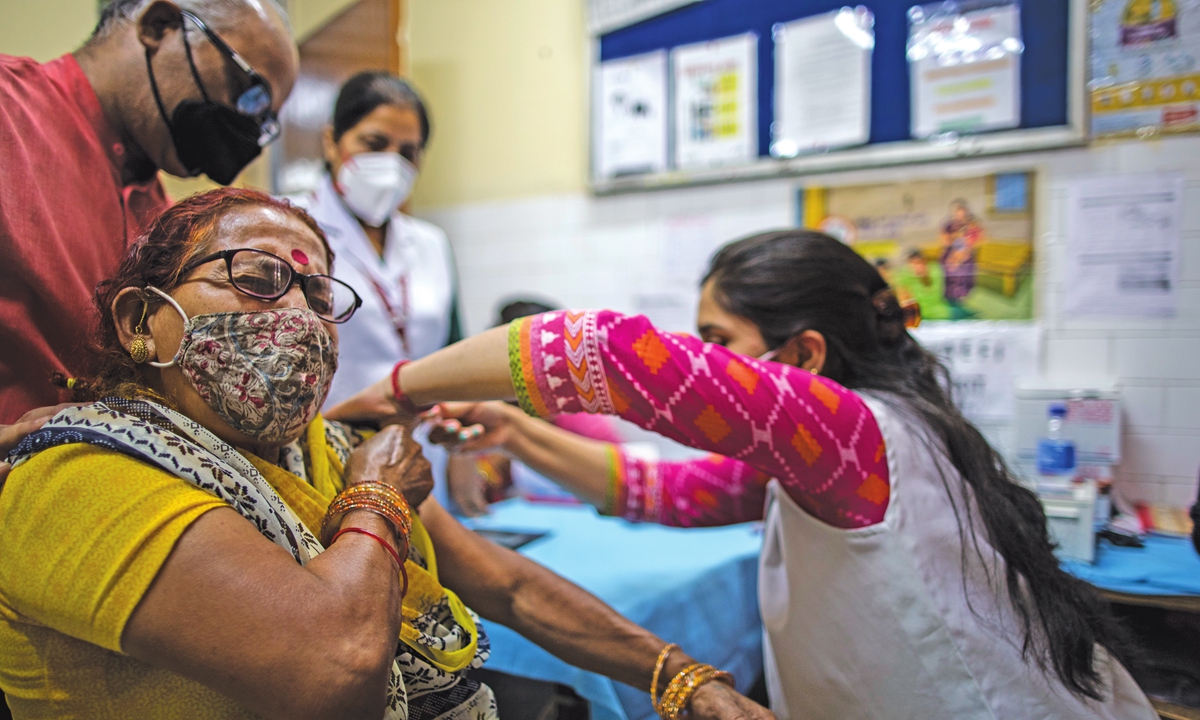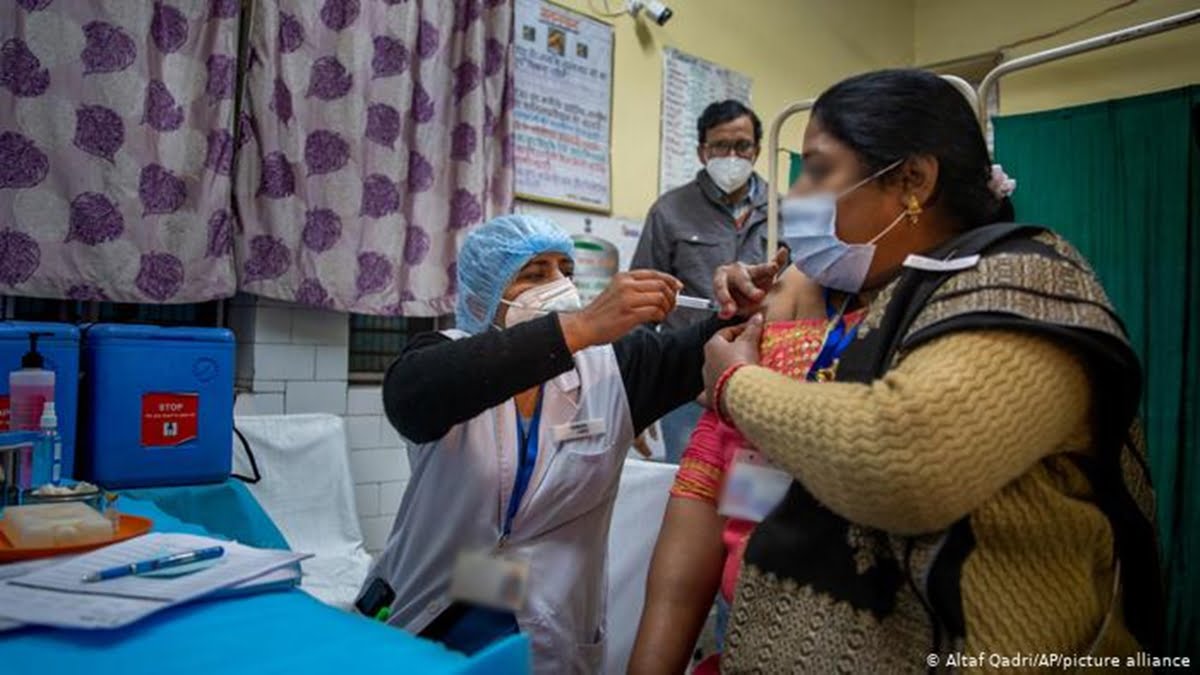Even as we continue to battle one of the most dreadful crises in modern history, the world is confronted with another important challenge: the distribution of COVID-19 vaccines. For India, this comes in the wake of a rather fatal second wave. Equitable distribution of the vaccines and easy access across geographies and cultures are extremely crucial affairs that will mould the future of the pandemic, both in India and the world.
However, it is during a period of crisis that institutional inequalities make themselves abundantly visible. To resolve any crisis with efficiency it becomes extremely urgent to sufficiently tackle the structural challenges that give rise to these inequalities. Nothing has exemplified our failure to confront and resolve these structural issues than this pandemic. Our knowledge of the pandemic is constructed on an abstract category of a ‘citizen’. The truth is however that ‘citizens’ are not a homogenous body. It also evades any inquiry into the plight of the marginalised with sufficient convenience.
Also read: How Has The Govt Dealt With Domestic Violence Post COVID-19?
Even though the pandemic has impacted men and women differently due to economic, social as well as biological reasons, there is a serious lack of sex-segregated data and research on the same. And while India battles a deadly second wave, an inclusive map and policy of vaccine distribution is yet to be drawn. In the recent weeks, demands to waive vaccine patents were echoed throughout India as well as globally to no avail. The UN Women reports when resources are strained and institutional capacity is limited, women and girls face disproportionate impacts with far reaching consequences that are only further amplified in contexts of fragility, conflict, and emergencies.
Currently, India has administered upto 140 million vaccines, out of which almost 50 million recipients are women. Worldwide more than 1 billion vaccines have been administered. In terms of density, 10 per 100 people in India are currently vaccinated as opposed to 69 per 100 people in the United States.
Vaccine and Women
In the US, seven women developed a rare blood clotting disorder after receiving the Johnson & Johnson vaccine. On April 13 and after the death of one recipient, an immediate pause in the use of Johnson & Johnson vaccine in the United States was announced. This has brought to centerstage discussions and questions on the differing impact of the vaccine on the female sex and male sex.
A study conducted by Centers for Disease Control and Prevention(CDC) found that 79% of reports of side-effects after receiving Pfizer and Moderna came from women. The CDC also reported that nearly all of the anaphylactic reactions to Covid-19 vaccines have occurred among women. This is however not unique to the Covid-19 vaccines. A 2019 study by the Journal of Allergy and Clinical Immunology also found that from 1990 to 2016, women made up 80% of all anaphylactic reactions to vaccines in adults. It is clear that women experience more side-effects from the vaccine in comparison to men. What remains unclear, however, are the reasons that render it so. Several experts claim that most women produce more antibodies as compared to men due to reproductive, hormonal, and genetic differences. Others agree that a lack of research in the biology of women makes arriving at homogenous conclusions about these reasons difficult. In a Health article, Amesh A. Adalja, a senior scholar at the John Hopkins Center for Health Security, says, “I don’t think there’s enough information to be able to draw any strong conclusions about why this may be occurring more in females than males.” Dr William Schaffner, an infectious disease specialist, tells Health that there is a difference between immune reactions between men and women but there has not been enough research in the area. Even though clinical trials for the vaccine included both men and women, this difference in metabolising drugs was not taken into account.
It is clear that women experience more side-effects from the vaccine in comparison to men. What remains unclear, however, are the reasons that render it so. Several experts claim that most women produce more antibodies as compared to men due to reproductive, hormonal, and genetic differences.
Concerns relating to the vaccine’s impact on reproductive health are also being raised worldwide. Some women report getting heavier periods after the first dose of the vaccine. Kate Clancy, an associate professor at University of Illinois, took to Twitter to talk about her experience. “I’m a week and a half out from dose 1 of Moderna, got my period maybe a day or so early, and am gushing like I’m in my 20s again,” she said, generating hundreds of responses. Another Twitter user wrote, “I haven’t had a period in years and I’m about 3 weeks out of my second shot and I’m gushing blood I freaked out but now I see I’m not the only one. This is crazy.” One user wrote “I had my 1st Covid vaccine (Pfizer) on April 29th and I am now experiencing my first menstrual cycle in 28 months. I’m in menopause.”
In a Chicago Tribune article, OB-GYN Dr Rakhi Shah says, “I think that potentially people are having normal menstrual pain plus the aches and pains that are associated post-vaccine, and maybe combining all of that together and associating it.” Another OB-GYN mentions that since bleeding occurs for so many reasons, it is really hard to isolate the two and the COVID-19 vaccine might be creating a hormonal spike that could trigger the bleeding. As of now, there remains no conclusive evidence or data that proves sufficient correlation between the vaccine and menstrual health. However there is a vacuum in information and governing bodies adequately addressing this, thus making dissemination of incorrect information, such as menstruating women should not get the vaccine, easier.

Thus, lack of research and data on women’s biology not only leaves a lot of room for uninformed speculation but also makes circulation of false information easier.
Way Forward: Equitable Distribution
According to the Lancet Report, there has not been any sex-based analysis of the pandemic by any government or health organisation or any estimates of potential victims in preparedness phases. During outbreaks of Zika Virus and Ebola in previous years, it has been observed with adequate sufficiency that women are impacted differently than men by lockdowns and diseases. In addition to biological challenges outlined above, certain economic, cultural and social conditions present women with a unique set of challenges in face of any crisis.
The World Health Organisation, in a September 2020 release, outlined frameworks for allocation and prioritisation of Covid-19 vaccines. It was noted that “equitable distribution is particularly important in the area of vaccines, which, if used correctly and equitably, could help to stop the acute phase of the pandemic and allow the rebuilding of our societies and economies.”
The distribution of vaccines and the politics surrounding it can be categorised into two realms: international and domestic. The recent surge in the COVID-19 wave in India has accentuated the divide between the global south and north in the international realm. Of course, structures of power that render one party at an advantage than another exist within a domestic geography as well.
Also read: What Is Keeping India’s Working Women Away From Work?
A 1998 census by the US Department of Commerce states that the health of Indian women is intrinsically linked to their status in society. Negligence of reproductive health and violence against women continue to remain the most prominent issues threatening the wellbeing of women. While the impact of the disease on reproductive health remains understudied, violence against women has skyrocketed. Another dimension to this is added when women’s participation in the informal sector, which was the worst hit by the pandemic, is taken into account. Women have taken the majority of the brunt of job losses during the pandemic, widening gendered poverty. Gendered poverty not only makes access to vaccines a gender issue, but also makes other COVID-related medicines inaccessible.
Women have taken the majority of the brunt of job losses during the pandemic, widening gendered poverty. Gendered poverty not only makes access to vaccines a gender issue, but also makes other COVID-related medicines inaccessible.

In the absence of a gendered policy that correctly directs the dissemination of vaccines and access to other COVID-related medicines amongst the Indian people, it is women and other gender minorities who will disproportionately suffer. The rise of the second wave has confirmed the policy failures of the current administration to appropriately deal with the pandemic. With the continued growth of the dreadful virus, times have very much become precedented. The only thing that remains unprecedented is the response of policy makers, national health advisors, and the Center to the current crisis.
Featured image source: DW
About the author(s)
Halima is a History graduate from Lady Shri Ram College for Women. She has worked with grassroots political parties as well as international organisations. Her research interests are feminist theory, foreign policy, and area studies. She is currently doing a Master's in International Relations. In her free time, she passionately advocates for Phineas and Ferb songs for Grammy's.





Interesting. Are there sufficient female volunteers for studies? Are there structural factors which are preventing women from volunteering for research studies?
The reason for the question is –
1. If the reason for the lack of such studies is apathy, then we focus on that and make research more diverse in parameters.
2. If the reason is that there is lack of participation, then we explore that further why that is so and incentivize participation.
Many drug and vaccine trials purposefully left out women, particularly pregnant and lactating women and hence data is scarce on safety, impact and efficacy of these on women’s bodies. Recently there have been guidelines for inclusion of all women unless there are specific reasons to exclude pregnant women. However we continue to see an ambiguity around this. My study on Tuberculosis bears this out. Amita Pitre, Lead Specialist, Gender Justice, Oxfam India